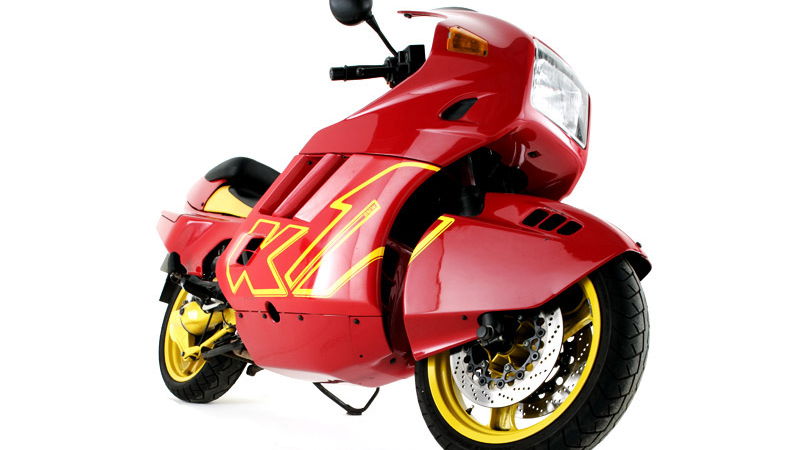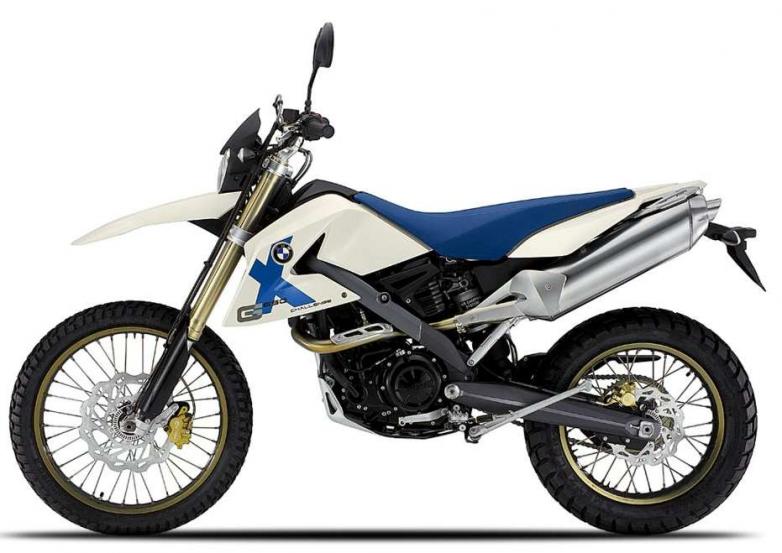Top 10 best ever BMWs
The best ever BMW motorcycles

PICKING the best BMW motorcycles ever is surprisingly tough. The firm has a longer history than most, but its models tend to be long-lived and to evolve slowly.
What’s more, there are always several bikes based on the same components, so there are models that don’t make the list that are mechanically near-identical to ones that do.
Be prepared to compromise on certain elements and there’s often a chance to get 90% of the bike for a fraction of the cost of the most desirable models. For example, settle for an R80/7, an R65GS or an R100GS rather than an R80 G/S; or an R100S instead of an R90S, and you’ll have a much fatter wallet.
There’s also the question of the firm’s occasional oddballs. These tend to be rare, weird and perhaps not immediately appealing, but often get more attractive with the rose-tinted specs of nostalgia.
You’re sure to disagree with some of our choices, so let us know your favourites in the comments.
Here's our top 10 countdown, starting with...

10: G650 XChallenge
Let’s get straight in with a controversial one. BMW’s G650 range – the XMoto, XCountry and XChallenge – was short-lived and slow-selling, and the firm soon reverted to the more familiar G650GS, which was really a revamped version of the old F650GS single, renamed to make space for the twin-cylinder F650GS and F800GS models. But the ‘X’ models were actually pretty decent; much lighter than you’d expect, with sharp styling and punchy motors. The XChallenge has some serious off-road ability as a result. Road-only riders might be happier with the supermoto-style XMoto.
When BMW launched the F800S back in 2006 it was a pretty big leap for the firm. No boxer twin here, but a brand new parallel twin. The rest of the bike still displayed some of BMW’s staid-and-sensible thinking, but with the F800GS from 2008 it really unleashed the platform’s potential. In reality, a lot of R1200GS owners would probably be happier with the smaller, easier-to-handle bike. Later this year there will be an entirely new parallel twin F-series range launched, showing that it’s become a cornerstone of the firm’s line-up over the last decade or so.
We were torn here. Should we include something from the K1200 range? The LT, perhaps, or the Hayabusa-rivalling K1200S? Even the unfaired K1200R/K1300R, which predated the current trend for high-powered naked bikes? There’s a logical argument for each of them, but we’re picking the K1600 – in range-topping GTL form because if you’re going to go big, you might as well push the boat out. Why? Because we love BMW’s bravery in bringing back the straight six to motorcycling for the first time since the Kawasaki KZ1300. This was a company that, until recently, was criticised for its unadventurous bikes, so congratulations are due for such bold thinking.
Before BMW took the leap and made the earth-shattering S1000RR, it put a toe in the shark-filled sports bike water with the HP2 Sport. Few had much faith that a shaft-drive bike powered by the firm’s old boxer twin could really be considered sporty, but the HP2 Sport was a revelation on that front. Sure, it was expensive and not as fast as ‘proper’ superbikes, but it showed that BMW could make a bike that was at home on the track. Honourable mentions here for the HP2 Enduro and HP2 Megamoto, which also displayed BMW’s new-found sport-oriented attitude in the same period. All three are sure-fire collectors bikes of the future.
READ OUR BMW HP2 SPORT REVIEW.
Many of you will wonder why we’re including a bike that, at least in its most familiar red-and-yellow paint scheme, looks like it should be ridden by Ronald McDonald. Even when it was new the K1 wasn’t considered a world-beater, so what makes it so important in retrospect? It’s partly because this late-80s behemoth was a serious attempt to apply aerodynamics to bikes. It was also a sports bike – sort of – that featured ABS some two decades before the tech would be more widely accepted. Later versions lost the John Deere-style yellow chassis parts and gained more subdued colours, and look all the better for it.
The K1 might have applied aerodynamic theory to a greater extent, but more than a decade earlier in 1977 BMW had also used a wind tunnel to sculpt the bodywork. It was the first mass-made bike to get a full fairing, and on that front alone earns a place on this list. Few others can claim such important firsts. It also helped establish the BMW style and market position that would last for the next 30 years – specialising in supremely capable sports-tourers and tourers that will go fast and far in comfort.
While the R100RS was the first mass made bike to have an all-enveloping fairing, the R90S, launched four years earlier in 1973, was the first mass produced bike to have a bikini fairing. Before this, if you wanted wind protection, you shopped for fibreglass aftermarket parts and lashed up a way to bolt them to your bike. Now BMW is revisiting the style with the R nineT Racer. How long before they offer that with a graduated gold-and-silver, R90S-style paint job?
BMW’s S1000RR was a bolt from the blue in the superbike class when it was launched in 2009. Most expected BMW to take a while to find its feet competing with Japanese firms that had spent decades learning how to make four-cylinder superbikes, but instead it strode in and showed them how it should really be done. The fact that the current 2017 version still shares a lot with the 2009 model shows just how right BMW got it first time around. There’s a new one coming, though, with a clean-sheet design. If BMW managed to get its first S1000RR so close to the bullseye, just imagine what it might achieve after spending nearly a decade learning more about the superbike market…
READ OUR BMW R NINET URBAN G/S REVIEW.
BMW’s S1000RR was a bolt from the blue in the superbike class when it was launched in 2009. Most expected BMW to take a while to find its feet competing with Japanese firms that had spent decades learning how to make four-cylinder superbikes, but instead it strode in and showed them how it should really be done. The fact that the current 2017 version still shares a lot with the 2009 model shows just how right BMW got it first time around. There’s a new one coming, though, with a clean-sheet design. If BMW managed to get its first S1000RR so close to the bullseye, just imagine what it might achieve after spending nearly a decade learning more about the superbike market…
While the R1200GS, launched in 2004, was really a development of a series of bikes dating back to the R80GS, it was BMW’s breakthrough model in the class. For years journalists had been raving about its predecessors, the R1100GS and R1150GS, but the buying public paid little attention until the 1170cc R1200GS appeared. Then they went mad for it. It’s been the best-selling bike in the UK, and in Europe, for years, and R1200GSes are now quantifiably the most common single model of motorcycle in use in the UK. The adoption of water-cooling on the most recent revamp has done no harm at all and despite their efforts, BMW’s rivals haven’t come close to touching it in sales terms.
The model pictured is the Adventure version.
READ OUR BMW R1200GS RALLYE REVIEW.
NOW CHECK OUT OUR TOP 10 BEST EVER YAMAHAS.
CLICK HERE FOR MORE VISORDOWN TOP TENS.

